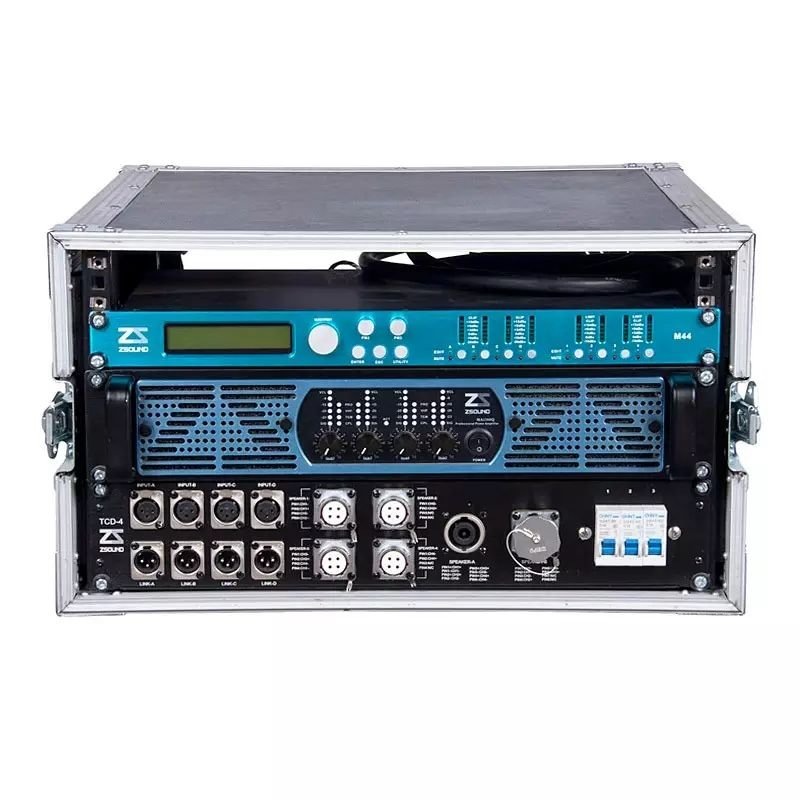ZSOUND PA System Frequently Asked Questions (Part 2)
Q: Why do ZSOUND 6U amplifier racks not include 4 wheels for transportation?
A: A standard 6U rack weighs 42kg (22kg without the mounted equipment). Even though 4 wheels on a rack provides, in theory, easier transport, it also increases the rack’s total capacity, thus eliminating the use of metals and materials and creating a better use of shipping volume and costs – both are aspects when shipping large quantity orders. This design is aligned with the practical needs of a professional PA sound system.
Q: Why is the TCD-4 interface distributor included with the ZSOUND 6U amplifier rack?
A: The TCD-4 is a signal conversion distributor that is intended to facilitate ease of integration in a whole system. Each front panel of the TCD-4 takes a processor supplied, M44, four audio in’s and delivers them four 4-core outputs for a shipping power plug standard to European p-numbers (not black with wires). This type of configuration limits cable clutter and should save meaningfully on installation time, resulting in fast and low error installations in a PA sound system setup.
Q: Why does each amplifier rack incur its own processor? May I just use a 4-in-8-out processor?
A: Processor-amp-interface modules are from the factory integrated together to eliminate on-site signal routing errors that impact and damage drivers from possible overload. Pre-configured racks allow for plug and play compatibility, and mixers can mix identical racks without any issues with sound quality for larger systems. One central processor would mean having to route signals cross-rack (left to right channel), leading to slower installation time and greater risks for miswiring, and the list goes on – which is casual destructive time for live performances in a PA sound system.
Q: How do you configure counts of whatever speaker and amplifier, processor, and interface distributor with the technical/physical parameters?
A: All of our systems follow a 2:1 power ratio (amp power = 2x speaker power) to allow headroom performance as described in our tour system diagrams. In fixed installations we assign independent outputs of the processor for one each speaker type so that the signal splitting avoids impedance issues from parallel combination signal splitting typical in high channel quantity examples like lounges and bars. Please always adhere to every project’s requirements to ensure processor channel counts are valid and signals are respected.



Leave a Reply